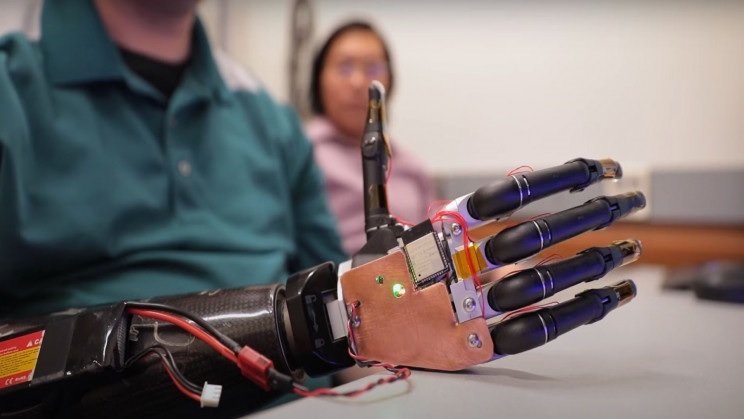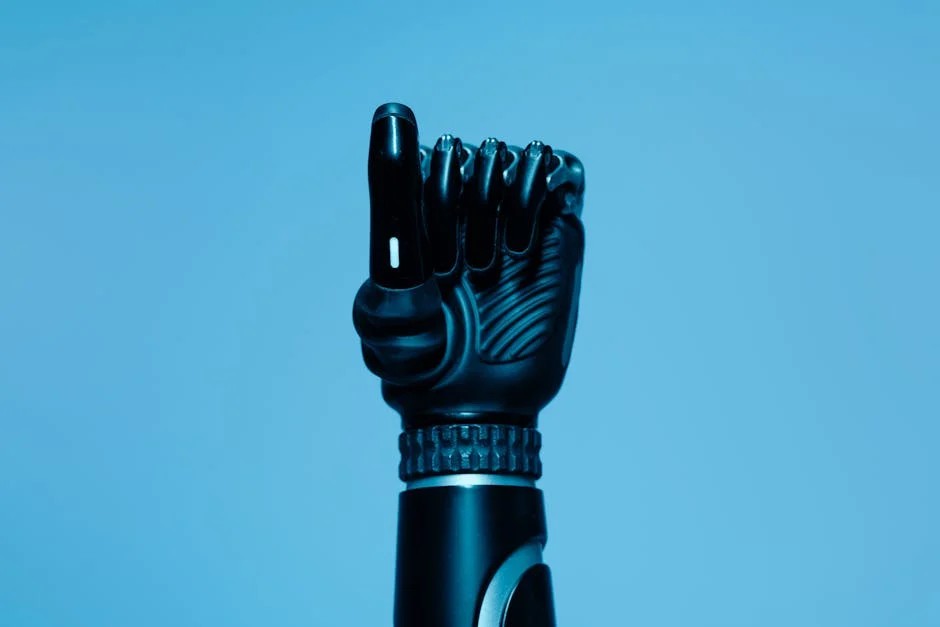The relentless pace of innovation in artificial intelligence can often feel like magic. A new smart device appears on the market, an app gains a startling new capability, or a robot performs a task once thought impossible. However, behind every polished product and seamless user experience lies a long, arduous journey that begins not in a factory, but in a research lab. The latest AI Research / Prototypes News consistently highlights a critical, often-overlooked catalyst in this journey: international collaboration. As the complexity of AI challenges grows, so does the necessity for a global approach to solving them. By pooling financial resources, diverse talent, and unique datasets, international partnerships are accelerating the transition from theoretical breakthroughs to tangible, world-changing prototypes. This synergy is not just fostering incremental improvements; it is laying the groundwork for entirely new categories of AI-powered technology, from advanced healthcare gadgets to truly autonomous systems that will redefine our daily lives.
The Global AI Research Ecosystem: A New Era of Collaboration
The days of siloed research teams working in isolation are rapidly fading. The most significant advancements in AI are now emerging from a deeply interconnected global ecosystem. This shift is driven by the sheer scale and complexity of modern AI development. Building a foundational model, designing novel hardware, or tackling grand challenges like climate change or disease requires a level of investment and expertise that often exceeds the capacity of a single institution or even a single nation. International partnerships have become the strategic imperative for staying at the cutting edge.
Key Drivers of Global AI Collaboration
Several factors are fueling this trend. First, the pooling of financial and computational resources allows research teams to undertake more ambitious projects. Grants and funds that bridge institutions across continents enable access to supercomputing clusters and specialized equipment that would otherwise be prohibitive. Second, these collaborations create a melting pot of talent. When engineers from one country work with data scientists from another and ethicists from a third, the resulting cross-pollination of ideas leads to more robust and innovative solutions. This diversity is crucial for mitigating algorithmic bias, as teams can draw on cross-cultural datasets to train models that are more equitable and representative of the global population. This is particularly vital in fields like Health & BioAI Gadgets News, where a model trained on a narrow demographic can have dangerous real-world consequences.
Tackling Global Challenges Together
Furthermore, many of the world’s most pressing issues are inherently global. Developing sustainable energy grids, monitoring climate change, and preparing for future pandemics require a coordinated international response. AI is a powerful tool in these efforts, and collaborative research is essential to its effective deployment. For instance, joint projects in the AI for Energy / Utilities Gadgets News space are developing smart grid prototypes that can predict energy demand and optimize distribution across entire regions, not just within a single city. Similarly, shared research on satellite imagery analysis, a hot topic in Drones & AI News, helps create more accurate climate models. These large-scale initiatives are a testament to the power of a unified global approach, turning academic research into prototypes with planetary impact.
The Prototyping Pipeline: From Abstract Concept to Tangible Tech
The journey from a research paper to a functional device is a multi-stage process often referred to as the “prototyping pipeline.” International funding and collaboration act as a lubricant, speeding up each stage and reducing the friction that can stall promising ideas. Understanding this pipeline is key to appreciating the latest AI Research / Prototypes News.
Phase 1: Foundational Research and Ideation

Everything begins with a question or a hypothesis in a university or corporate research lab. This is where foundational concepts are born—a new neural network architecture, a more efficient learning algorithm, or a novel sensor design. This stage is often highly theoretical and exploratory. Funding at this level is crucial as it provides the freedom to pursue high-risk, high-reward ideas that may not have an immediate commercial application. This is where breakthroughs that eventually power future Neural Interfaces News or next-generation AI Assistants News originate.
Phase 2: Proof-of-Concept and Early Prototypes
Once a concept shows promise, the next step is to build a proof-of-concept (PoC). A PoC is a minimalist demonstration designed to verify that the core idea is feasible. For example, a new algorithm for object recognition, a key area in AI-enabled Cameras & Vision News, might first be tested in a controlled software simulation. If successful, it could then be integrated into a crude hardware prototype, perhaps a simple board camera connected to a processor. This is the stage where a theoretical paper on spatial awareness might evolve into the first clunky prototype of a device you’d later read about in Smart Glasses News or AR/VR AI Gadgets News.
Phase 3: Iteration and Refinement on AI Edge Devices
A working PoC is far from a consumer-ready product. The next, and often longest, phase involves relentless iteration and refinement. The prototype must be made smaller, more power-efficient, more robust, and more user-friendly. A significant focus here is on optimization for real-world deployment, which increasingly means running AI models directly on the device. This is the core challenge highlighted in AI Edge Devices News. A cloud-dependent prototype for a security camera is interesting, but a prototype that can perform person detection on-device without an internet connection is revolutionary. This iterative process is where we see the evolution of everything from AI Companion Devices News, which need to be responsive and private, to advanced Wearables News, where battery life is paramount.
Impact Across Industries: Where Research is Yielding Real-World Prototypes
The fruits of this collaborative research and development pipeline are visible across nearly every technology sector. The abstract concepts funded by international grants are directly shaping the prototypes that will soon become mainstream products.
Smart Homes and Personal Environments
In the home, research into contextual awareness and multimodal AI is leading to more intuitive and proactive smart devices. The latest Smart Home AI News is filled with prototypes that go beyond simple voice commands. Imagine an AI Lighting Gadgets News feature where the lighting system adjusts not just to the time of day, but to your biometric data from a wellness band. Or consider developments in AI Audio / Speakers News, where prototypes can isolate a single speaker in a noisy room or translate conversations in real-time. This also extends to specialized devices; research in computer vision is enhancing Robotics Vacuum News with prototypes that can identify and avoid specific types of obstacles, like pet waste or charging cables, a common pain point for current users.
Healthcare, Wellness, and Accessibility

Perhaps the most profound impact is in the health and wellness space. Collaborative research is accelerating the development of life-changing devices. The AI Sleep / Wellness Gadgets News sector is seeing prototypes that use radar and AI to monitor vital signs without physical contact. In the realm of AI for Accessibility Devices News, researchers are creating prototypes of smart canes that use LiDAR and haptic feedback to help the visually impaired navigate complex environments. These innovations, along with breakthroughs in AI Fitness Devices News that offer personalized coaching based on form and fatigue, are direct results of interdisciplinary research combining medicine, engineering, and machine learning.
Robotics, Automation, and Mobility
The world of robotics is a hotbed of prototype development. The latest Robotics News is dominated by advancements in sensor fusion, reinforcement learning, and swarm intelligence, often pioneered through international academic competitions. These breakthroughs are being prototyped in everything from Autonomous Vehicles News, where perception systems are becoming more resilient in adverse weather, to AI Personal Robots News, with a focus on creating robots that can safely and usefully interact with humans in domestic settings. Even niche areas like AI Gardening / Farming Gadgets News are seeing prototypes of small, autonomous drones that can monitor crop health on a plant-by-plant basis.
Navigating the Challenges: Best Practices and Future Outlook
While the potential of global AI research is immense, the path from prototype to a successful commercial product is fraught with challenges. Understanding these hurdles and adopting best practices is essential for innovators and investors alike.
Common Pitfalls and Considerations

One of the biggest obstacles is the “valley of death”—the gap between a successful research prototype and a manufacturable, marketable product. Many brilliant academic projects fail to cross this chasm due to a lack of funding, engineering expertise, or market understanding. Ethical considerations are another major hurdle. Prototypes developed in a lab must be rigorously tested for bias, privacy implications, and safety before being unleashed on the public. This is a critical checkpoint for everything from AI Security Gadgets News, where facial recognition raises privacy flags, to AI Toys & Entertainment Gadgets News, where data collection on children is a serious concern.
Tips for Success and a Look Ahead
To navigate these challenges, several best practices are emerging:
- Embrace Interdisciplinary Teams: Successful projects almost always involve a mix of AI researchers, hardware engineers, UX/UI designers, and domain experts (e.g., doctors for health tech, city planners for smart city tech).
- Prioritize User-Centric Design: Involve end-users early in the prototyping process. A technologically impressive device that solves no real-world problem is destined to fail. This is crucial for products in AI in Fashion / Wearable Tech News or AI Kitchen Gadgets News where usability is key.
- Plan for Scale and Data: Design prototypes with scalability in mind. Consider the data pipeline, computational costs, and manufacturing logistics from the outset. This is vital for innovations discussed in Smart City / Infrastructure AI Gadgets News.
- Secure Diverse Funding: Relying on a single source of funding is risky. A mix of academic grants, venture capital, and corporate partnerships can provide a more stable runway for development.
Looking forward, the trend of global collaboration is set to intensify. As AI becomes more integrated into our physical world through AI Sensors & IoT News and specialized hardware, the need for shared standards, ethical guidelines, and open research platforms will become even more critical. The prototypes we see today are not just glimpses of future products; they are the building blocks of a more intelligent, connected, and automated world.
Conclusion
The journey of an AI innovation from a spark of an idea to a device in our hands is a marathon, not a sprint. The latest AI Research / Prototypes News reveals that this journey is increasingly a team sport played on a global field. International partnerships, fueled by collaborative funds and a shared sense of purpose, are breaking down barriers and accelerating progress at an unprecedented rate. By combining financial muscle, diverse intellectual capital, and rich, varied datasets, these collaborations are not only solving complex technical problems but are also ensuring that the resulting technology is more robust, equitable, and beneficial for humanity. For anyone following the trajectory of technology, the key takeaway is clear: keep an eye on the research partnerships and early-stage prototypes of today, for they are the most reliable blueprint of the world of tomorrow.










